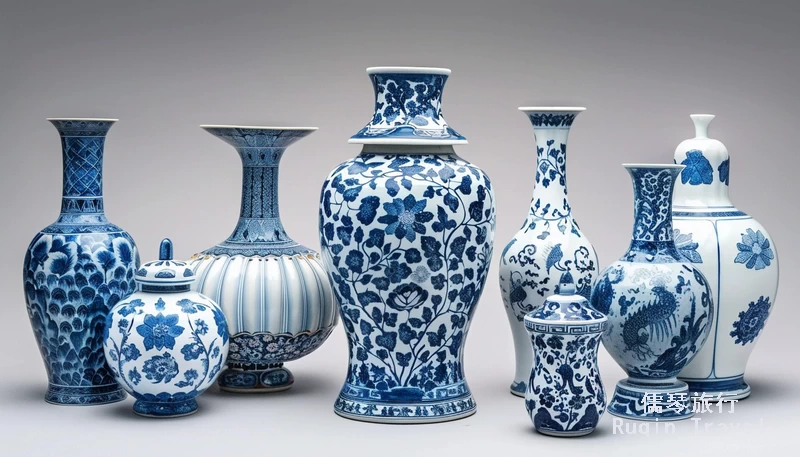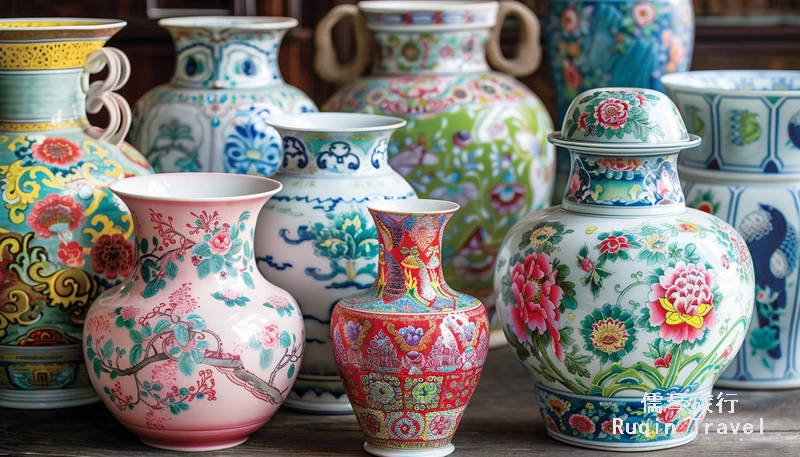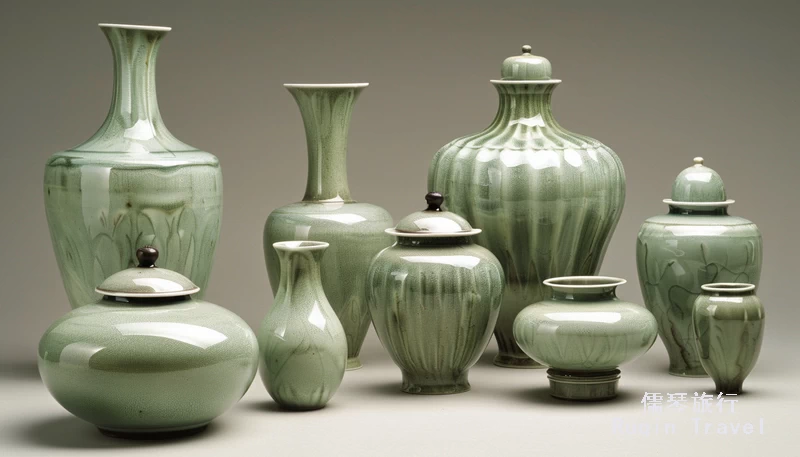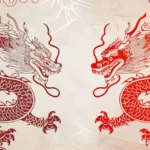Chinese porcelain is a fascinating subject for many travelers. Known for its beauty, craftsmanship, and history, Chinese porcelain attracts tourists from around the world. This guide will take you through the essentials of Chinese porcelain, from its origins to its modern-day significance.
The Origins of Chinese Porcelain
Chinese porcelain has a rich history that dates back to ancient times. First, let’s explore its origins. Porcelain originated during the Han Dynasty (206 BCE – 220 CE). Initially, it was a simple form of pottery. However, over time, Chinese artisans perfected their techniques.
During the Tang Dynasty (618 – 907 CE), porcelain production saw significant advancements. The Tang Dynasty marked the beginning of the golden age of Chinese porcelain. Artisans began to use high-quality clay and glazes, leading to the creation of beautiful, durable porcelain.
Jingdezhen: The Porcelain Capital
Next, we must visit Jingdezhen, often referred to as the “Porcelain Capital” of China. Located in Jiangxi Province, Jingdezhen has been producing porcelain for over 1,000 years. This city became renowned for its high-quality porcelain during the Song Dynasty (960 – 1279 CE).

Jingdezhen porcelain is famous for its delicate craftsmanship and intricate designs. Visitors can explore numerous factories and studios in Jingdezhen. Additionally, you can see artisans at work, creating stunning pieces of porcelain.
The Evolution of Chinese Porcelain
The history of Chinese porcelain is marked by continuous innovation. The Ming Dynasty (1368 – 1644 CE) and Qing Dynasty (1644 – 1912 CE) were particularly important periods. During the Ming Dynasty, blue and white porcelain became extremely popular. This type of porcelain features cobalt blue designs on a white background. It remains one of the most iconic styles of Chinese porcelain today.

In the Qing Dynasty, porcelain production reached new heights. Artisans began to experiment with new colors and techniques. This period saw the creation of famille-rose porcelain, known for its pinkish hues and detailed paintings.
Famous Chinese Porcelain Pieces
Several pieces of Chinese porcelain have achieved worldwide fame. For example, the Ming Dynasty’s blue and white porcelain vases are highly sought after by collectors. Another famous piece is the Qing Dynasty’s famille-rose porcelain, admired for its vibrant colors and intricate designs.
Additionally, the Song Dynasty’s celadon porcelain is renowned for its jade-like glaze. These pieces are considered masterpieces of Chinese ceramic art.
The Art of Chinese Porcelain
Chinese porcelain is not just about functionality; it is also an art form. The designs often reflect Chinese culture and philosophy. Common motifs include dragons, phoenixes, and lotus flowers, symbolizing power, beauty, and purity.

Furthermore, the process of creating porcelain is itself an art. It requires skill and patience. Artisans must carefully mold the clay, apply the glaze, and fire the pieces at high temperatures. The result is a work of art that can last for centuries.
Collecting Chinese Porcelain
Collecting Chinese porcelain can be a rewarding hobby. However, it requires knowledge and expertise. First, familiarize yourself with different types of porcelain and their characteristics. Next, learn about the history and significance of each piece.
When purchasing porcelain, always buy from reputable dealers. Additionally, look for pieces with provenance, or a documented history. This can increase the value and authenticity of your collection.
Visiting Chinese Porcelain Museums
For those interested in learning more, visiting Chinese porcelain museums is a must. These museums showcase a wide range of porcelain pieces, from ancient to modern times.
The National Museum of China in Beijing has an extensive collection of Chinese ceramics. The Shanghai Museum also boasts an impressive array of porcelain. Additionally, the Jingdezhen Ceramic Museum offers a deep dive into the history of Jingdezhen porcelain.
Exploring Porcelain Markets in China
Exploring porcelain markets is another exciting way to experience Chinese porcelain. These markets offer a variety of pieces, from antiques to contemporary designs.
The Panjiayuan Market in Beijing is a popular destination for antique porcelain. Similarly, the Shanghai Antique Market has a wide selection of ceramics. For a more immersive experience, visit the markets in Jingdezhen. Here, you can find both traditional and modern pieces, often at reasonable prices.
Porcelain Factories and Studios
Visiting porcelain factories and studios provides insight into the production process. Jingdezhen is home to many such establishments.
You can watch artisans as they mold, glaze, and fire the porcelain. Some studios even offer workshops where you can try your hand at making your own piece.
Porcelain as Souvenirs
Chinese porcelain makes for an excellent souvenir. It is a beautiful and practical reminder of your trip. When choosing a piece, consider its size and fragility. Smaller items, like tea sets or decorative plates, are easier to transport.
Look for unique designs that reflect Chinese culture. Additionally, purchasing directly from artisans supports local craftsmanship.
Handcrafted Chinese Porcelain
Handcrafted Chinese porcelain is highly valued for its quality and uniqueness. Each piece is made with care and attention to detail. This contrasts with mass-produced pottery, which can lack the same level of artistry.
Handcrafted pieces often feature intricate designs and high-quality materials. They are perfect for collectors or those looking for a special souvenir.
The Cultural Significance of Chinese Porcelain
Chinese porcelain holds great cultural significance. It is not just a form of art; it is also a symbol of Chinese heritage. Porcelain has been used in China for centuries, in both everyday life and ceremonial contexts.
Porcelain pieces often reflect Chinese beliefs and values. For example, dragons represent power and strength, while lotus flowers symbolize purity. Understanding these symbols can enhance your appreciation of Chinese ceramic.
The Impact of Chinese Porcelain on the World
Chinese pottery has had a significant impact on the world. It was one of the first Chinese goods to be exported on a large scale. During the Ming and Qing Dynasties, Chinese porcelain was highly sought after in Europe.
This led to the development of European porcelain industries, inspired by Chinese techniques. Today, Chinese porcelain remains a symbol of excellence in ceramics.
Practical Tips for Buying Chinese Porcelain
When buying Chinese porcelain, there are several things to keep in mind. First, research the different types of porcelain and their characteristics. This will help you identify authentic pieces.
Next, consider the condition of the pottery. Look for any cracks or repairs, as these can affect the value. Additionally, ask for provenance if available.
When negotiating prices, be respectful but firm. Remember that haggling is a common practice in many markets.
In conclusion, Chinese porcelain is a fascinating and beautiful aspect of Chinese culture. From its ancient origins to its modern-day significance, it offers a rich history and exquisite craftsmanship. Whether you are a collector or simply an admirer, exploring Chinese porcelain is a rewarding experience.
By visiting museums, markets, and factories, you can gain a deeper understanding of this art form. Additionally, purchasing handcrafted pieces supports local artisans and allows you to bring a piece of China home with you.
Remember to appreciate the cultural significance and artistry of each piece. Chinese porcelain is not just a souvenir; it is a connection to centuries of tradition and craftsmanship.
With this guide, you are well-equipped to explore the world of Chinese porcelain. Enjoy your journey and the beauty that awaits you.


